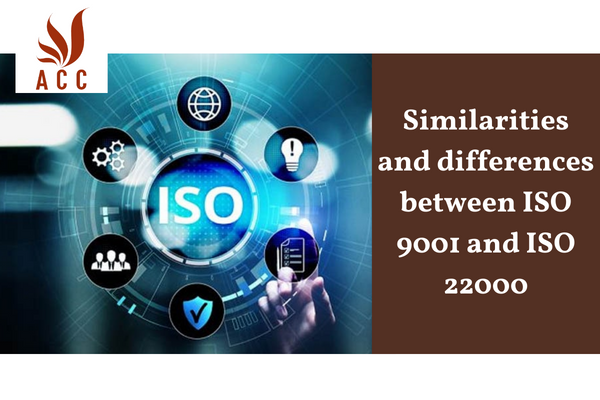ISO 9001 and ISO 22000 are two of the most widely recognized quality management standards in the world. Both standards provide a framework for organizations to improve their quality management systems and ensure that they meet the needs of their customers and stakeholders. However, there are also some key differences between the two standards.

Similarities and differences between ISO 9001 and ISO 22000
1. Introduction
ISO 9001 and ISO 22000 are two of the most widely recognized standards for quality management and food safety management systems, respectively. Both standards are based on the Plan-Do-Check-Act (PDCA) cycle and share a number of similarities. However, there are also some key differences between the two standards.
2. Similarities
- Both standards are based on the PDCA cycle. The PDCA cycle is a cyclical approach to continuous improvement that involves planning, doing, checking, and acting.
- Both standards require organizations to establish a quality management system (QMS) or food safety management system (FSMS). These systems must be documented and implemented in order to meet the requirements of the respective standards.
- Both standards require organizations to ensure that their products or services meet customer requirements. This includes understanding customer needs and expectations, and taking steps to meet those needs.
- Both standards require organizations to monitor and improve their QMS or FSMS on an ongoing basis. This includes collecting and analyzing data, identifying and addressing opportunities for improvement, and implementing corrective and preventive actions.
3. Differences
-
Scope: ISO 9001 applies to all organizations, regardless of their industry or size. ISO 22000, on the other hand, is specifically designed for organizations that are involved in the production, processing, distribution, or handling of food.
-
Requirements: ISO 9001 covers a wide range of quality management topics, including customer focus, leadership, planning, resource management, product realization, measurement, analysis, and improvement. ISO 22000, on the other hand, focuses specifically on food safety management.
-
Documentation: ISO 9001 requires organizations to document their QMS in a way that is clear, concise, and easy to understand. ISO 22000, on the other hand, is more prescriptive about the types of documentation that must be maintained.
4. Additional information
In addition to the similarities and differences listed above, there are a few other things to keep in mind when considering ISO 9001 and ISO 22000.
- Certification: Both standards can be certified by a third-party organization. Certification can provide organizations with a competitive advantage and demonstrate their commitment to quality and food safety.
- Cost: The cost of implementing and maintaining an ISO 9001 or ISO 22000 system can vary depending on the size and complexity of the organization.
- Benefits: Organizations that implement ISO 9001 or ISO 22000 can realize a number of benefits, including:
- Improved customer satisfaction
- Reduced costs
- Increased efficiency
- Enhanced risk management
- Improved decision-making
If you are considering implementing ISO 9001 or ISO 22000, it is important to do your research and consult with a qualified expert.
ISO 9001 and ISO 22000 are both valuable tools that can help organizations improve their performance. However, it is important to understand the similarities and differences between the two standards before choosing which one is right for your organization.
Nội dung bài viết:






Bình luận